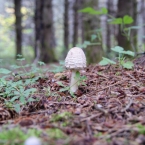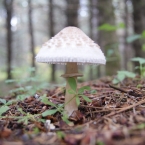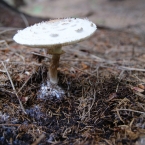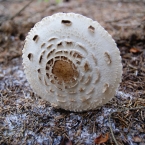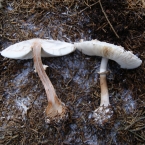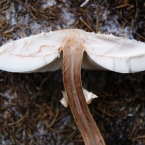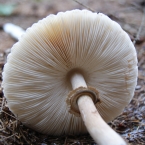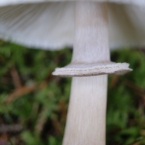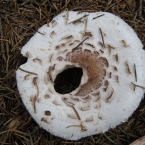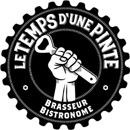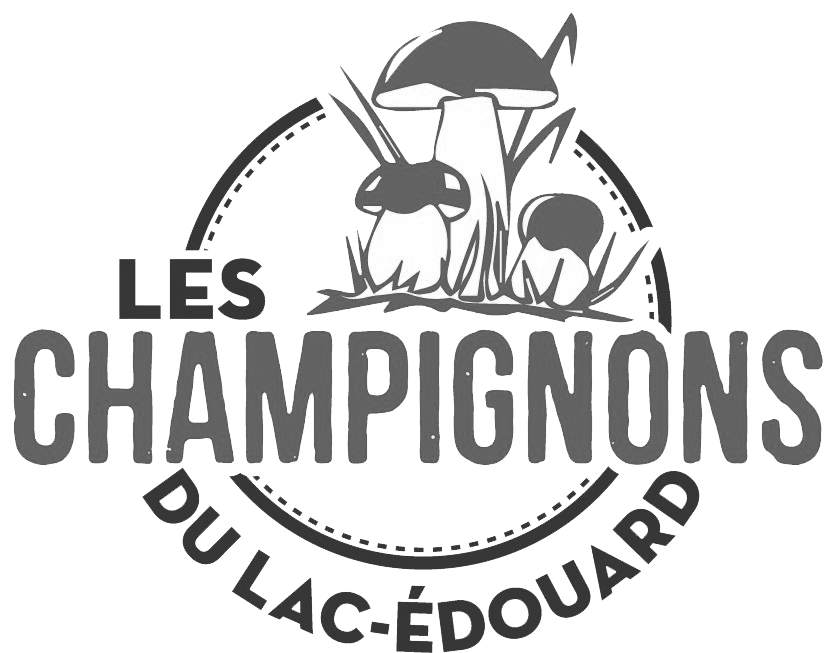
The Parasol Mushoom can fructify late into the autumn season (these photos were taken October 15th in a white spruce plantation) in a variety of habitats, from fields to coniferous 1 2 or deciduous woodlands, where it prefers soil rich in organic matter. Its habitat is situated in the deciduous and transitional forests.
In opening the cap, one notices something no other species possesses: the cuticle splits into a multitude of brown scales 4 arranged in concentric circles on a white background around a smooth, bald nipple in the center.
The gills are completely free 5 and distinct from the stem 7. The stem is obviously bulbous 3 5, with no trace of a volva, and equipped with a clearly defined double movable ring 7 8. The stem is always hollow and fibrous 6. The mycelium in the soil is white 5, and since this is a wood decay fungus, it may be used to inoculate new sites.
The Parasols are the closest relations of the deadly Amanita. Like them, they have gills, a ring around the stem and a bulb; however, the top of the bulb displays no trace of a volva. Insects and slugs enjoy the flesh of the cap 9.
Photos: Fernand Miron.
Habitats where you can find this species :
Click on thumbnails
to get a larger image
Possible companion species
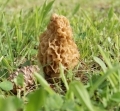
+
Yellow Morel
Morchella esculenta
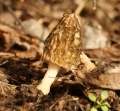
+
Black Morel
Morchella conica
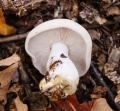
+






